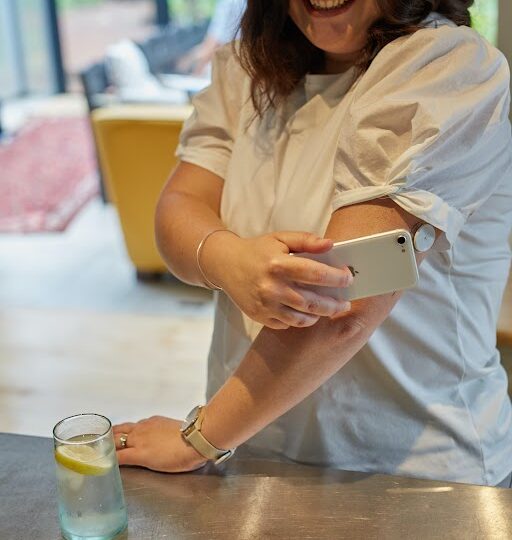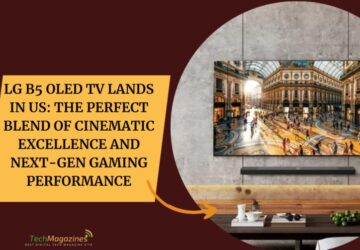Background:
In the constantly evolving realm of biosensors, where precision and efficiency reign supreme, traditional fabrication methods have long presented formidable challenges. Globally, the production of biosensors has heavily relied on techniques such as lithography, sputtering, and chemical vapor dispensing. While effective, these methods come with inherent drawbacks. The stringent cleanroom prerequisites and substantial costs associated with these processes have impeded widespread adoption.
Across diverse industries, including microelectronics, automotive, and healthtech, the biosensors sector has encountered persistent obstacles in achieving both cost-effective and scalable production. Conventional methods, though capable, often fall short of meeting the dynamic demands of a rapidly growing industry. As the necessity for lab-on-chip analysis intensifies, biosensors are compelled to deliver structures even smaller than 10 µm. However, conventional techniques like inkjet or screen printing prove inadequate, prompting the industry to explore innovative solutions.
Addressing these challenges head-on, XTPL S.A. introduces the revolutionary UPD – Ultra Precise Dispensing technology. This innovation circumvents the cleanroom requirements and cost barriers associated with traditional methods, offering an affordable and scalable solution for biosensor production.
Challenges in the Fabrication and Manufacturing of Biosensors:
Biosensors are indispensable in healthcare, environmental monitoring, and food safety, yet their fabrication and manufacturing encounter numerous challenges. Key issues include:
- Biocompatibility: Ensuring materials used are biocompatible is crucial to prevent adverse reactions with biological samples, requiring compatibility with the intended application.
- Sensitivity and Specificity: Achieving high sensitivity and specificity is an ongoing challenge, demanding detection of low analyte concentrations in complex samples while minimizing false results.
- Miniaturization and Integration: Shrinking biosensors for integration into devices like diagnostics tools and wearables is essential. Maintaining or improving performance while reducing size remains a challenge.
- Stability and Shelf Life: Biosensors need a reasonable shelf life, facing challenges like biomolecule degradation and changes in performance over time during storage and use.
- Cost-effectiveness: Manufacturing costs can hinder widespread adoption, necessitating cost-effective processes without compromising performance.
- Selectivity in Complex Samples: Real-world samples pose challenges in selectivity due to interference, requiring strategies to enhance biosensor selectivity in complex matrices.
- Reproducibility: Standardizing fabrication methods is essential to ensure consistent biosensor performance across different batches.
- Multiplexing: Integrating multiple sensing elements into a single platform while maintaining performance is a complex task for biosensors.
- Biological Recognition Element Stability: Ensuring stability of biological recognition elements under various conditions is an active area of research.
Meeting Global Challenges in Biosensor Commercialization:
The commercialization and global availability of biosensors face significant hurdles despite their potential in healthcare, environmental monitoring, and food safety. Overcoming these challenges is crucial for successful adoption on a global scale:
a. Costs and Affordability:
- High development and production costs make biosensors expensive for end-users. Reducing production costs is essential for widespread adoption, especially in resource-limited settings.
b. Sensitivity and Specificity:
- Achieving high sensitivity and specificity is critical for accurate and reliable biosensor performance, posing a challenge in development.
c. Standardization:
- Lack of standardized testing protocols hinders reliable comparison of biosensors. Standardization is vital for ensuring reliability, reproducibility, and regulatory approval.
d. Regulatory Approval:
- Obtaining regulatory approval is time-consuming and expensive, particularly in healthcare applications, slowing down commercialization.
e. Integration with Existing Technologies:
- Seamless integration with existing technologies and infrastructure is crucial for successful biosensor implementation, requiring compatibility.
f. User Acceptance:
- Widespread adoption hinges on user acceptance, influenced by factors like ease of use, reliability, and perceived benefits.
g. Scalability and Production Challenges:
- Scaling up production while maintaining quality and consistency poses challenges in manufacturing processes and quality control.
h. Durability and Shelf Life:
- Ensuring the durability and stability of biosensors over time is critical for practical use, requiring extended shelf life.
i. Privacy and Ethical Concerns:
- Biosensors collecting sensitive biological information raise privacy and ethical concerns, necessitating clear guidelines and regulations.
j. Global Distribution and Accessibility:
- Ensuring global distribution and accessibility, especially in remote areas, involves addressing logistical challenges related to transportation, storage, and training. Collaboration among researchers, industry stakeholders, regulatory bodies, and policymakers is crucial to fostering innovation, standardization, and responsible commercialization of biosensors.
XTPL’s UPD Technology: Advantages and Applications:
XTPL’s UPD technology introduces a paradigm shift in biosensor production by offering a cost-effective and scalable alternative to conventional methods, eliminating the need for cleanrooms and costly masking. With an extraordinary resolution below 10 µm, surpassing industry standards (inkjet: 100 µm, screen printing: 200 µm), UPD addresses the biosensors industry’s demand for intricate microstructures essential for lab-on-chip analysis.
A standout feature of UPD is its versatile material compatibility, enabling the use of all metallic nanoparticles on any substrate. This unparalleled flexibility allows for customized biosensor design tailored to specific biosensing requirements.
Efficient functionalization is a key aspect of XTPL’s proof of concept, highlighting the technology’s prowess in precisely sensing pathogens and pollutants. This success underscores UPD’s potential for accurate analyte targeting, addressing a persistent challenge in biosensor technology.
Furthermore, the XTPL interface exhibits universal sensitivity to a broad range of metallic nanoparticles. This broad sensitivity enhances UPD’s applicability in diverse biosensing scenarios, offering a comprehensive solution for various analytical needs. XTPL’s UPD emerges as a transformative technology with unmatched precision, versatility, and efficiency in the biosensors industry.
Biocompatibility: A Future Point of Emphasis:
Biocompatibility is a critical aspect of medical device development and regulation. Both the European Union’s Medical Device Regulation (MDR) and the United States Food and Drug Administration (FDA) have specific requirements for assessing the biocompatibility of medical devices, including biosensors.
MDR (Medical Device Regulation – EU):
General Requirements:
- MDR emphasizes the need for medical devices to be designed and manufactured in a way that minimizes risks associated with their use.
- Annex I of MDR outlines the general safety and performance requirements, and this includes biocompatibility.
Biological Evaluation:
- MDR requires a biological evaluation of the medical device, considering the potential biological risks associated with its use.
- ISO 10993-1:2018, “Biological evaluation of medical devices – Part 1: Evaluation and testing within a risk management process,” is a recognized standard for conducting biological evaluations.
Chemical Characterization:
- The chemical characterization of materials used in the device is essential. This includes information on substances released from the device and potential interactions with the human body.
Risk Management:
- MDR emphasizes the importance of a comprehensive risk management process, including the identification and assessment of biological risks.
FDA (U.S. Food and Drug Administration):
General Requirements:
- FDA requires medical devices to be safe and effective for their intended use.
- Biocompatibility is assessed through preclinical testing, which may include in vitro and in vivo studies.
ISO Standards:
- Similar to MDR, ISO 10993 standards are widely accepted by the FDA for assessing the biocompatibility of medical devices.
Biocompatibility Assessment:
- The FDA expects manufacturers to conduct a risk-based biocompatibility assessment.
- This assessment should include an evaluation of potential adverse biological effects and consideration of the duration and nature of patient contact with the device.
Chemical Characterization:
- Manufacturers are required to provide detailed information on the chemical composition of materials used in the device and any potential adverse effects.
Biocompatibility Testing:
- The FDA may require specific biocompatibility testing based on the nature of the device and its intended use.
Both regulatory bodies emphasize the importance of a risk-based approach to biocompatibility assessment. Manufacturers are encouraged to use recognized standards and guidelines, involve qualified experts, and thoroughly document their biocompatibility evaluations to meet the regulatory requirements. It’s essential for manufacturers to stay updated on the specific regulatory requirements and guidelines as they may change over time.
Conclusion:
Surpassing the constraints inherent in existing fabrication techniques, XTPL presents an economically viable, scalable, and exceptionally accurate solution adept at addressing the intricacies of miniaturization and the targeted detection of various analytes. Backed by tangible metrics and compelling proof of concept, XTPL transcends the role of a participant, establishing itself as a frontrunner in propelling the capabilities of biosensors. In doing so, it propels us toward the realization of globally accessible point-of-care testing.








